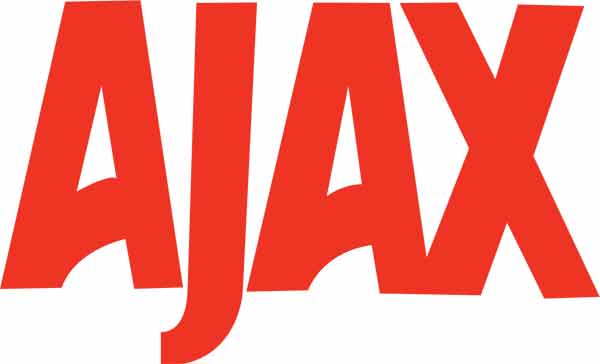Uses of Ajax in Web 2.0
In the ’90s, when “Dynamic web” innovation that enables programmers to quickly develop Web-based applications with interaction with users, many have ever hoped that one day all the applications we utilize would be web-based instead of software running separately on a single computer (desktop-based application). Indeed, together with the quick growth of the Internet and the huge benefits of Web applications (easily accessible, available everywhere, every when without needing to update much of the made use of equipment …), the future of software application firm will certainly be closely related to Web applications, or be changed simply puts. Nevertheless, until now, the hope has not been thoroughly satisfied since a number of functions of Web applications is the limit that appears to be impossible to pass. That is the way in which Web users and applications communicate with each other.
Different from stand-alone applications running in customer, web ones are restricted by its operation concept: interact through HTTP procedure in the client-server methodology. Any action from user to web will certainly have the browser to fetch information to server. Therefore, hold-up is the most important drawback of web applications
On one stunning day in the spring of 2005, there went a term which produced an unbelievable throughout and altered the whole dot-com world because 2005: The creation of AJAX. Web 2.0 generation has simply begun and will have to undergo a long roadway ahead to be able to alter what’s already become familiar to people today. It is the complicated web of AJAX innovation which plays a vital function in the second phase. The world has not truly all set to receive, many people think that AJAX applications are establishing faster than Moore’s law – driving force through the computing origins.
Exactly what is AJAX?
AJAX (shorthand for Asynchronous JavaScript and XML) is a set of device for optimizing high speed of web applications by recover small pieces of information from the server asynchronously in the background without interfering with the display screen and behavior of the existing page, as opposed to loading the entire page. AJAX is not a single technology; it is the mix of interrelated web development techniques. In particular, HTML and CSS display information, DOM design presents XMLhttpRequest object details. Despite the name, using XML is not actually required nor do the requests need to be asynchronously.
A lot of stories about the origins of AJAX begin because the minute Microsoft established Remote Scripting technology in 1998. Nevertheless, the technique of asynchronous material moving had actually appeared in the element IFRAME of Internet Explorer 3 (1996) and LAYER of Netscape 4.0 (1997). On presenting IE 4.0, Microsoft make use of the object-oriented design various DOM. By 2000, Netscape entirely lost his browser market before Costs Gate’s supplier and aspect LAYER went to history.
A number of years later in 2005, the appearance of brand-new AJAX simply drew the interest of the cyber civilization and became the GUI improvement devices for web applications. Since then, AJAX has actually become the center of every stories and topic related to web 2.0 generation.
How does AJAX work?
Computer users always imagine one day when desktop-base software will be kept and run completely from web instead of from their limited-space hard drives. However, the dream comes false. They forget that Web applications are restricted by the principle in which all actions need to be done through HTTP (Active Text Transfer Method – protocol transmission via links). Activities from user on the websites will certainly produce an HTTP demand to servers. Servers perform some processing stage like obtaining information, computing and examining the validity of details, customizing memory, then send a complete HTML page to the customer. Technically, this method seems to be reasonable but quite inconvenient and time consuming in fact as what will users do while servers are busy doing its function. We need to WAIT.
To overcome the above problem, developers presented intermediate method: AJAX processing – between client and server. This is like adding a layer between processes to reduce the time of “info walking” and responding time. Instead of reloading (refresh) the entire page, it just loads an area of the page which altered while other parts continue to be. Then when browsing a page that supports AJAX, users will certainly never see a white window (blank) and hourglass icons – symbol showing that server is performing its task. For example, in a photo website, with conventional applications, the entire page containing the photo website will be open form the beginning and the all of images will certainly be load again if there is any modification. When applying AJAX, DHTML just replace the title and just editing, making transactions smooth and quickly.
All actions of the user send JavaScript command to the AJAX processor instead of creating an HTTP request (HTTP request) and queries to servers. If you need anything from the server, download additional code, such as upgrading user interface code or getting new information, AJAX demand will be transmitted to a server asynchronously, normally by using XML, without interfering with the communication of users.
Common AJAX applications.
Google Suggest display suggested terms virtually immediately even when user has actually not completed keying your keywords. Now with Google Maps, individuals can track the modification, step, drag the map as desktop environments. Google Suggest and Google Maps are two examples which highlight the methods of new-generation Web applications. The world’s leading search service supplier has invested heavily in the development of AJAX. Virtually all the programs they introduced recently, from Orkut, Gmail beta to Google Groups, are all AJAX applications.
Numerous other companies are following this trend as photo-sharing site Flickr, or the Amazon’s A9.com online search engine. Yahoo vendor has released a new Yahoo Mail Beta utilizes Ajax technology. Brand-new mail boxes will certainly be retrofitted under Web 2.0 like RSS feeds, preview … Microsoft is likewise carrying out the program Windows Live Mail and Windows Live Messenger which support AJAX.
Those jobs showed that AJAX is not a too distant innovation that is presented in the real world, from extremely simple models such as Google Suggest to the sophisticated and complex as Google Maps.
The greatest challenges in creating Ajax applications are not technical. The core Ajax technologies are mature, stable, and well understood. Instead, the challenges are for the designers of these applications: to forget what we believe we know about the restrictions of the Web, and begin to imagine a wider, richer variety of possibilities.” (Alexei White, Production Director of eBusiness Company commented. “AJAX will gradually impact Microsoft’s loss in the market. Although it can not be completely overwhelmed, it will bring alternative features for the many part as the Office product.”.
The Drawback.
AJAX can contribute to create a new generation of web applications. However, it is also a dangerous technology to cause numerous troubles in the user interface. For example, we press “Back” (back to previous page) was rated in the basic Web interface. Sadly, this function does not deal with Javascript and people can not discover the previous content by pushing Back. Therefore, just a little initial data on the website is altered and can not be recovered. This is one of the main reasons that many applications do not support Javascript.
Besides, people can not save the web address as their Favorite or Bookmark to review later. Applied by the mediated class for transaction, AJAX applications do not have a fixed address for each item. This shortcoming makes AJAX easy to lose it points in user’s eyes.
The browser support AJAX is Microsoft Internet Explorer 5.0 or higher, based on Gecko browsers like Mozilla, SeaMonkey and Netscape 7.1; contains KHTML like Konqueror API 3.2 or higher, Safari and so on …
At softwareoutsourcing.biz, we’ve been doing our own work with Ajax over the last several months, and we’re recognizing we’ve only scratched the surface of the rich interaction and responsiveness that Ajax applications can supply. Ajax is an important development for Web applications, and its importance is only going to grow. In spite of those inconsiderable downside, Ajax is truly a terrific turning point in the web development in the entire world.
For more details about ajax courses




